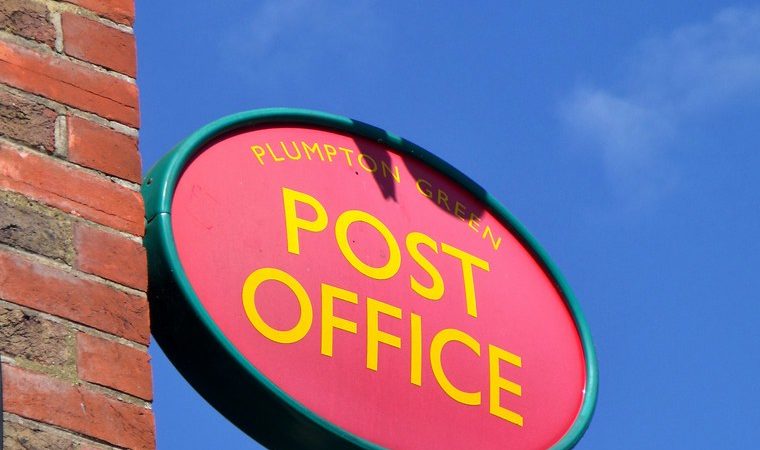What happens when a law firm or accountancy firm does a website revamp?
As part of our work building and maintaining website reporting for large numbers of law firms and accountancy firms, we see a distinct pattern when firms re-launch or revamp their website.
Visitors to the site fall 20-50% within a few weeks of the new website being launched.
For this fall to happen the revamp has to be of a particular kind though: website page locations (URLs) have to change. A slight cosmetic update like new logos, images, or tweaks to existing pages may not involve changes to the location of pages; movement to a new website developer or a new content management system usually will change page locations.
Sometimes the change to locations of pages may be inadvertent, for example for marketing reasons you simply decided to change ‘Publications’ in your content management system to ‘Insights’ without realising it changed all the URLs. Or you moved to a ‘secure site’, from http to https, without realising this changed page locations too.
Visitor reductions can be surprisingly hard to see. Sometimes you may even see a small rise in visitors, say where you’ve moved away from an old ‘search-engine-unfriendly’ content management system to a friendlier one like WordPress but you’ll be unaware that you could have achieved a much larger rise. In other situations website developers will move your firm to an entirely new Google Analytics account, making it hard to compare the new site to the original site, or even omit to reinstall analytics entirely so you have no idea website traffic has dropped.
Website page locations and redirects
When you move house, you tell the post office to forward your mail to your new home address.
The same thing can (and should) be done with websites, using a feature called redirects.
Redirects are a simple instruction to people and search engine crawlers that the old page that used to be on your pre-revamp website at http://www.mylawfirm.com/staff/danny-kaye is now on the post-revamp site at the new page location of http://www.mylawfirm.com/lawyers/danny-kaye-entertainment-los-angeles.
Think of it as a two column table with hundreds and sometimes thousands of pairs of old urls and new urls, that does the forwarding automatically without the visitor even realising.
Why are redirects so important in a website relaunch?
Redirects improve traffic from search engines, and in analytics data we find people coming directly from search engines account for 60-70% of visits for law and accountancy firms. Furthermore we know that there is a strong correlation between search traffic and people performing high value activities on your site like contacting your fee-earners (even when we exclude ‘Google as a phonebook’ scenarios).
You also don’t want prospective or current clients having a bad user experience, for example by clicking on an article link on a third party website like Mondaq’s or LinkedIn and getting a 404 (‘page not found’) error on your website.
And finally, 404 errors are not recorded by your analytics, so without redirects you don’t know that someone tried to come to your site at all.
Why do redirects impact search traffic so much?
To understand this we need to look briefly at how Google works.
Each page on your old website has a ranking in Google. Effectively a reputation score. And the location of the page, the URL, is the index to that score.
The fact that a page on your new website has close to or even exactly the same textual content as the old page doesn’t help – by moving to a new URL you effectively throw away the page’s reputation because Google no longer has anything under their old index value for your page (the old URL).
Furthermore, Google’s ascendancy in the search engine world, versus older search engine incumbents like Altavista, was based on the realisation that when page A links to page B that is a vote for the importance of page B and all other things being equal page B should rank higher because of that link.
So all the ‘votes’ that point to your old page locations from third party websites or social media are discarded without redirects.

Redirects simply enable Google to update their index and transfer the page’s reputation score from its old location to its new location (search for something like ‘why do redirects benefit your website‘ to find out more).
What are the steps Magnifirm takes in a redirect project?
1. Review the old site’s analytics to identify the most important pages to redirect
So you’ve gone through the pain of relaunching your website and you now want to address redirects. What needs to be done?
Firstly some time needs to be spent going over the analytics for your old site and identifying every page that needs to be redirected because they were driving large numbers of visitors and other criteria (for example redirecting a page that has links to it on the web even if it’s driving smaller amounts of traffic).
For cost and time reasons (your marketing team may still be moving content across from the old site and cleaning things up if you’re like most firms) you do not want to redirect every single page on your old site. For a big firm that may represent thousands of pages of redirects and for smaller firms hundreds of pages.
Usually we find 20% of your visitors to your old site come from just a handful of pages which would be our top redirect priorities. We may also find via the analytics that you didn’t migrate some very popular pages because they were written a few years ago and lost visitors that way (there are smarter ways to handle old articles than deleting them and many of our clients end up recreating some pages based on what we find in redirect projects).
In redirect cleanup projects we also find ‘shortcuts’ have been taken. For example:
- only a few major URLs were redirected
- only URLs receiving more than a certain number of pageviews were redirected and we need to divine what that threshold was and see if it was the right level (with a big professional services firm thousands of smaller traffic pages can add up to 20% of your total visits)
- only URLs for certain types of content were redirected (for example lawyer profiles were done as they were linked from fee-earner’s email signatures and if those weren’t redirected it would be noticed, but articles were not redirected)
- ‘blanket redirects’ were done to save the developer time. A single blanket redirect of all your former article URLs to the new homepage of your publications is useless – as search engines can’t find the text that was on the original page of each article at the new location. So again the original page’s reputation score is discarded.
2. After analysis: create the redirection table by finding the new matching page locations

We’ve found the important old URLs that need to be redirected.
But now we need to find the new location of each page on your new website and match the two.
There’s usually no quick fix for this: it’s time-intensive (we use our tagging team which also handles articles we syndicate for Mondaq clients to do this work).
Once we have the old URL from the analytics of course the old website with the page contents is no longer up.
So we work out what was on the old page using something like a combination of old URL text (if you had a keyworded URL) or sometimes a copy of the page and then we search for each matching page on your new site. For Mondaq clients we may already have a separate copy of the old article and the old URL stored with it too, so we can see what was on it to search for.
Finally different website platforms/content management systems will have different tools for implementing redirections and may require slightly different formats for the redirect itself: some will allow a bulk import, others are slower and require each URL pair to be entered on individual screens, and some don’t support redirects at all and instead we give your webmaster the redirect commands to paste in at the webserver level (for instance with Apache webservers in the .htaccess config file).
Redirects are not the only issue that arises in website revamps (there’s other common pitfalls to navigate) but they are one of the most important for preserving and enhancing your market presence, as your website footfall dwarfs that of people who come in your front door.
So if you’re a professional services firm and you’ve done a revamp in the last 12 months and simply want to check if redirections were properly implemented, or if you’re wondering why you’ve seen a fall in traffic, get in touch. We’ll check out for you what was done and let you know if there’s an opportunity to regain or grow your market footprint via redirects.





